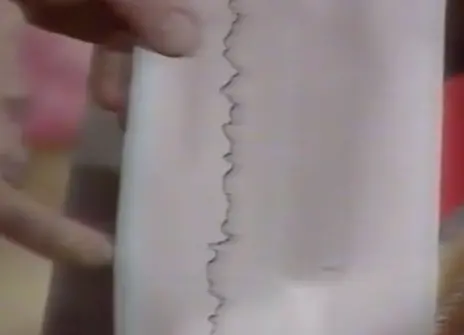Lecture 2 – Pumps, pipes and flows
From the 1975 programme notes:
The heart was at one time thought to be the very seat of life and personality, and indeed we still speak of black-hearted villains and soft-hearted aunts. This was so presumably because the most obvious immediate sign of death was a cessation of the heartbeat. We now know that the heart is just a blood pump, or more correctly a pair of pumps, which are responsible for keeping the major transport system of the body in continuous motion. This knowledge has not decreased the importance of the heart because at normal body temperature we cannot survive a cardiac arrest of more than a few minutes.
The blood is the distribution system that supplies every cell in the body with nutrients and oxygen; the refuse collection agency which removes carbon dioxide and waste products from the cells; a branch of the post office which carries chemical messages from one organ or tissue to another, and the central heating or cooling system which ensures that heat is taken away from hard-working parts of the body and supplied to other parts which only work correctly if kept at a constant temperature.
The demands of the body can vary considerably between say sleep and running as hard as you can. These can be met by increasing the speed and stroke volume of the pump, and also by adjusting the diameter of the blood vessels so that the blood can be directed to where it is needed most.
Because one does not normally want to puncture the system one has to use indirect methods in order to find out what goes on inside it; for instance at what pressure is the heart delivering the blood, how fast is it flowing in different large arteries or veins, or even how much oxygen is being carried? One of the more difficult measurements is to find out how much blood the heart is actually pumping and how efficiently it does it.
We shall try and find out all these things without spilling a drop!
About the 1975 CHRISTMAS LECTURES
In his 1975 CHRISTMAS LECTURES, Heinz Wolff explores how to investigate your inside without breaking the skin.
From the 1975 programme notes:
Imagine that you had to find out what was wrong with a motor car, but that you were not allowed to open the bonnet, or undo any nuts and bolts, or to break any wires. You would have to rely entirely on the noises you could hear, on how it reacted to the manipulation of external controls, and maybe on the characteristics of the exhaust.
The doctor using only his own senses is in much the same position when examining a patient, except that he has to deal with a very much more complicated system, and moreover one which is understood less completely than a motor car. This series of lectures is about how one can examine the functioning or the structure of the inside of the body noninvasively, that is, without having to open the patient. In particular, they will be concerned with the techniques which are now available to amplify the doctor's senses or to detect signals to which we are normally quite insensitive.
Each lecture will take a particular set of signals, consider their origin and why they are important, demonstrate how they are detected and measured, and explain how the instrumentation works. The lectures will also illustrate how much modern medicine is becoming dependent on a proper application and understanding of engineering and physical principles.






